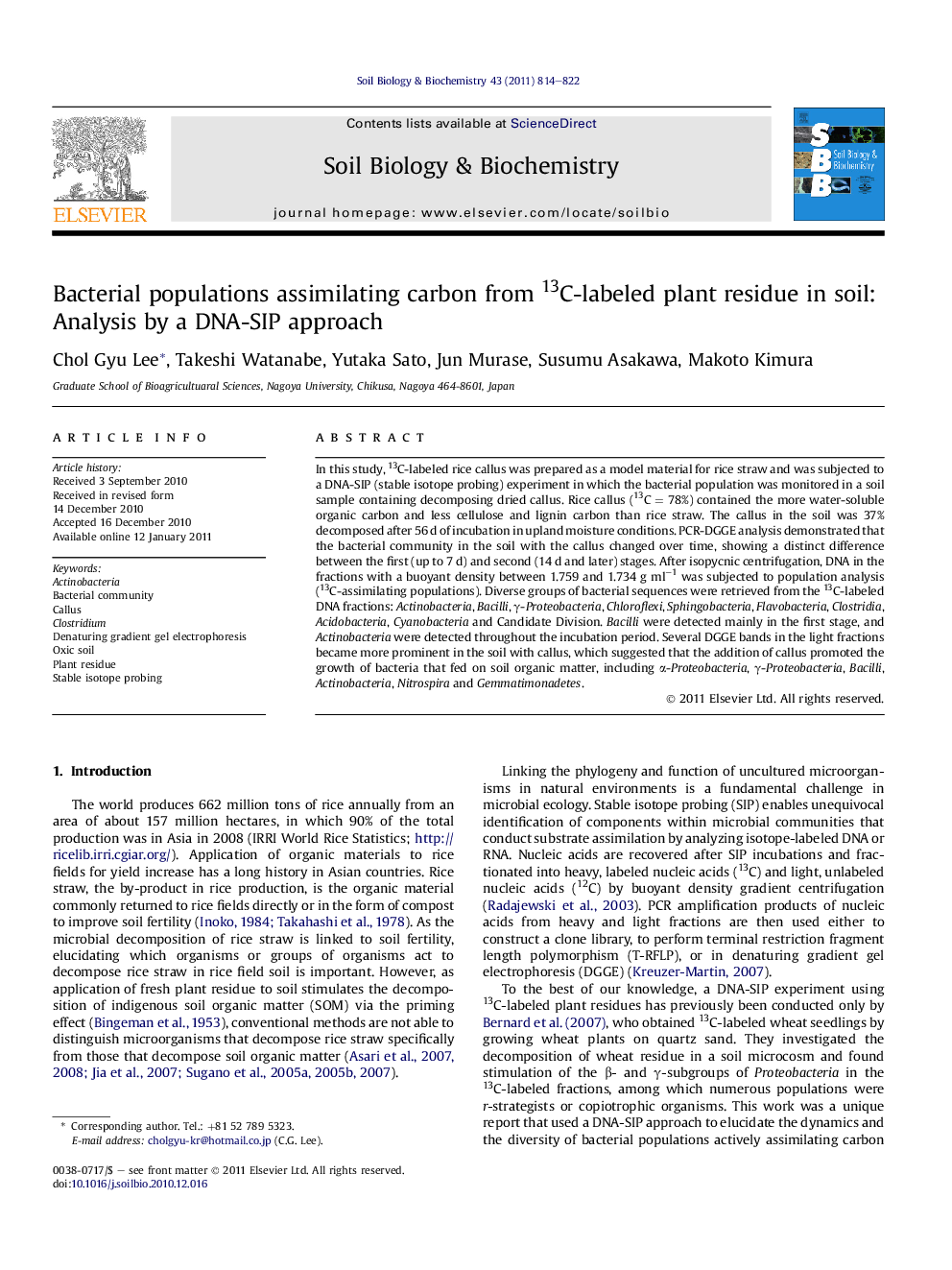| کد مقاله | کد نشریه | سال انتشار | مقاله انگلیسی | نسخه تمام متن |
|---|---|---|---|---|
| 2025460 | 1069997 | 2011 | 9 صفحه PDF | دانلود رایگان |

In this study, 13C-labeled rice callus was prepared as a model material for rice straw and was subjected to a DNA-SIP (stable isotope probing) experiment in which the bacterial population was monitored in a soil sample containing decomposing dried callus. Rice callus (13C = 78%) contained the more water-soluble organic carbon and less cellulose and lignin carbon than rice straw. The callus in the soil was 37% decomposed after 56 d of incubation in upland moisture conditions. PCR-DGGE analysis demonstrated that the bacterial community in the soil with the callus changed over time, showing a distinct difference between the first (up to 7 d) and second (14 d and later) stages. After isopycnic centrifugation, DNA in the fractions with a buoyant density between 1.759 and 1.734 g ml−1 was subjected to population analysis (13C-assimilating populations). Diverse groups of bacterial sequences were retrieved from the 13C-labeled DNA fractions: Actinobacteria, Bacilli, γ-Proteobacteria, Chloroflexi, Sphingobacteria, Flavobacteria, Clostridia, Acidobacteria, Cyanobacteria and Candidate Division. Bacilli were detected mainly in the first stage, and Actinobacteria were detected throughout the incubation period. Several DGGE bands in the light fractions became more prominent in the soil with callus, which suggested that the addition of callus promoted the growth of bacteria that fed on soil organic matter, including α-Proteobacteria, γ-Proteobacteria, Bacilli, Actinobacteria, Nitrospira and Gemmatimonadetes.
Research highlights
► 13C-labeled rice callus was subjected to a DNA-SIP experiment as a model material for rice straw.
► The bacterial community in the soil with callus changed over time of 56-d incubation.
► Diverse groups of bacterial sequences were retrieved from the 13C-labeled DNA fractions.
► The addition of callus promoted the growth of bacteria that fed on soil organic matter.
Journal: Soil Biology and Biochemistry - Volume 43, Issue 4, April 2011, Pages 814–822